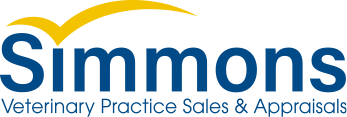Wilson W. McManus II, DVM CVPM
-Simmons & Associates MidSouth –
Every year without exception, normally just after the first of the year, the pricing increase letters start rolling in from most of the major pharmaceutical companies, pet food manufacturers and other various suppliers of the veterinary items that we sell to clients to keep their pets healthy. These letters usually start out with various reasons why their prices are going up. Sometimes it is that the basic materials used to make the products or food, such as corn, soybeans or wheat have gone up in cost, so they must go up on their prices. Rising fuel, transportation costs or really any number of reasons are provided to justify the fact that their prices are increasing. We, as veterinarians and practice leaders, just sigh and keep buying their products without much ability to do anything about it. The reasons for the increases often seem valid, and we need the products to operate. I am positive that these same letters will arrive shortly, but this year the reason for the price increases will undoubtedly have something to do with the COVID 19 pandemic.
So why, when most of our suppliers easily raise their fees at least annually for any number of reasons, do we as veterinarians have such difficulty developing a clear, precise and timely system to evaluate the fees we charge for our products and services?
When I evaluate a veterinary practice for management purposes, or as a valuation to sell, the first thing that usually jumps out in an underperforming practice is that their gross revenues are decreasing, flat or have little to no growth. With flat revenues and ever-increasing costs associated with operating the practice such as labor, insurance, as well as supply and inventory costs, you can only begin to imagine how that negatively impacts the financial success and the subsequent value of the practice. It is a losing proposition for the owner(s) of the practice. They are essentially having to work harder than they were the year before just to maintain their profitability, even if the operational costs do not continue to increase.
During the usual valuation process, I ask my client if they have adjusted their fees recently or have a plan to regularly evaluate their fee structure in the near future. They usually state, “Well, it’s been a while, we just haven’t gotten around to it yet” or any myriad of other excuses. Tactfully, I suggest that in order to keep up with the annual inflation rate that averages 2-3% over the last 10-20 years, they will need to raise their fees at least 2-3% or the base inflation rate annually just to keep from losing ground financially. I also interject that because the above-mentioned inflation rate is an average of basic consumer items that constitute the annual consumer price index (CPI), it often doesn’t accurately reflect the actual medical inflation rate that we experience. Studies have shown that the annual medical inflation rate is can often double the basic inflation rate. So, they could easily factor in a 4-6% increase into their fee schedule annually to offset the actual medical inflation rates. As animal health care providers, we are buying and using the same supplies, inventory and equipment as well as often hiring similar personnel as other health care providers. Our actual costs are often increasing for veterinary practices much closer to the medical inflation rate of 6.5% as quoted by Forbes Magazine, September 2019. The inflation rate for health care benefit costs (medical insurance) alone is estimated to be close to 8.1% for 2021, according to the 2021 Global Medical Trends Survey Report by Willis Towers Watson.
What is the solution for the practice leadership?
The first step is to develop a system to keep up with inflation by evaluating fees at least annually and raising them appropriately. In successful practices that I have observed, January seems to be one of the best months to evaluate fees and make adjustments. January is generally one of the slower months for most veterinary practices which allows for more time to implement. Practice leadership is also less likely to kick it down the road because they are too busy. The earlier you start, the better!
There are several excellent resources available to make the increases easier on the practice leaders. Please make use of reference resources such as American Animal Hospital Association’s “Fee Reference Guide, Tenth Edition” to gauge your service fees as compared to other regional and national fee survey data that they compile. Additionally, you can explore the use of programs such as “Profit Solver™” Profit Solver – Zoetis to determine the actual labor and overhead cost basis of services provided by your veterinary hospital. You can also utilize the practice management software dashboards, if available, through your practice management software, to gauge regional and national practice fees and revenue sources.
If our veterinary practice costs are constantly going up, then the fees we charge also have to go up. You must stay on the top of the task, as it is imperative to keeping your veterinary business financially healthy. As the old Nike ads say, “JUST DO IT!”
Thank you, Wilson!



